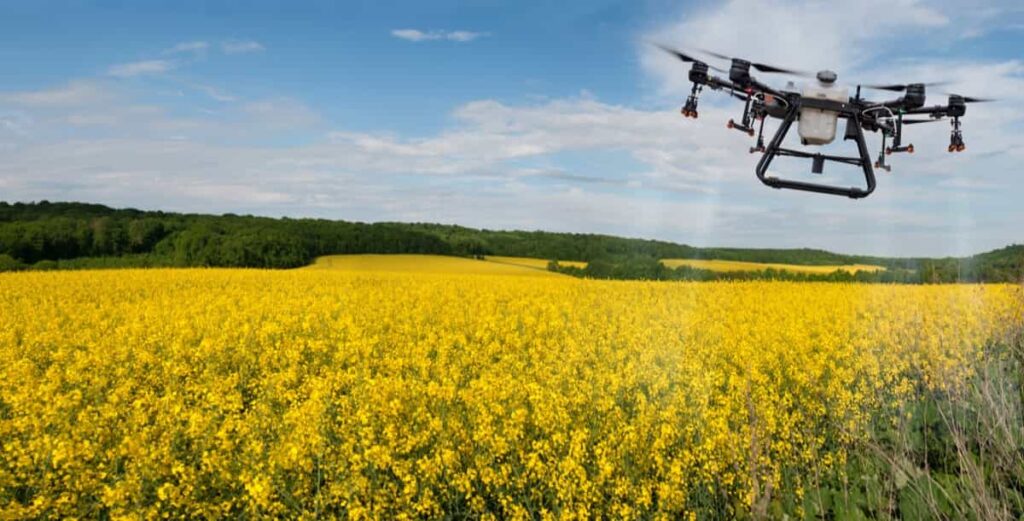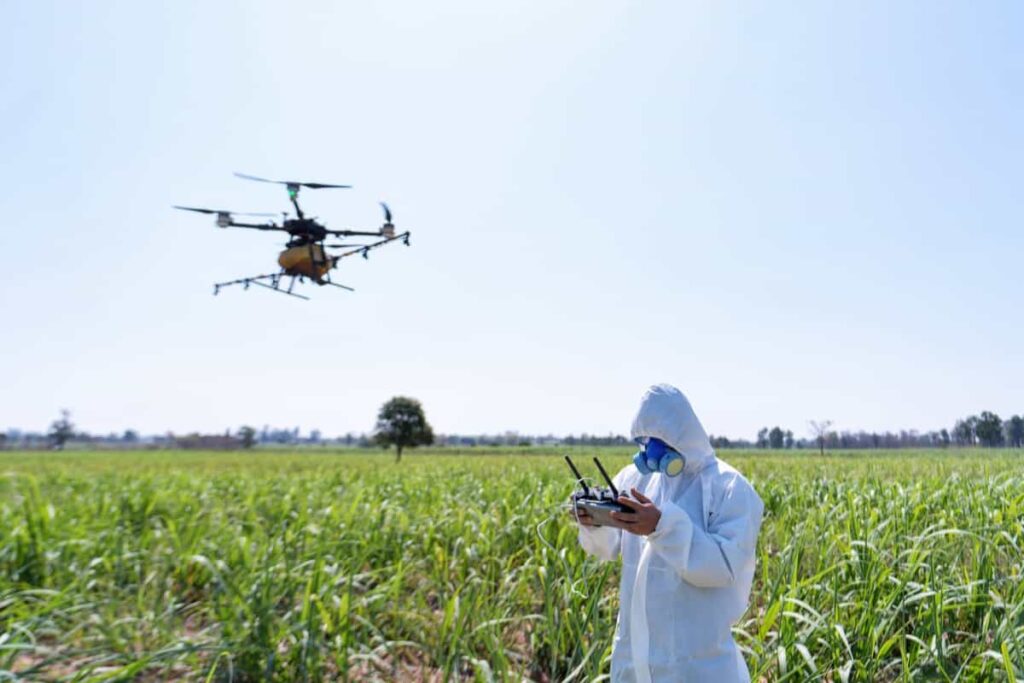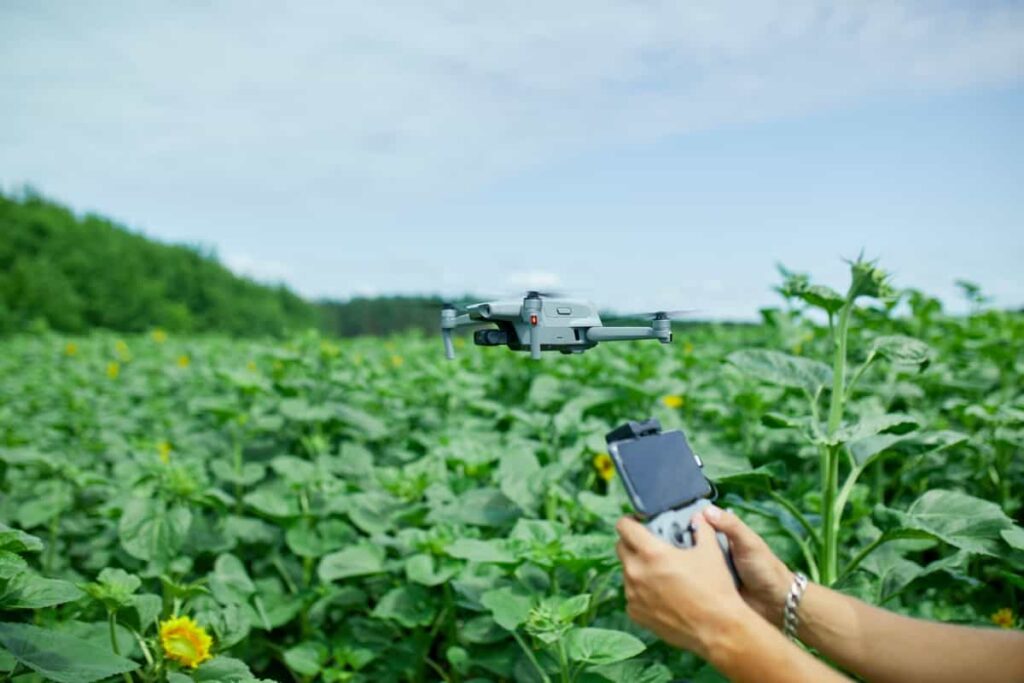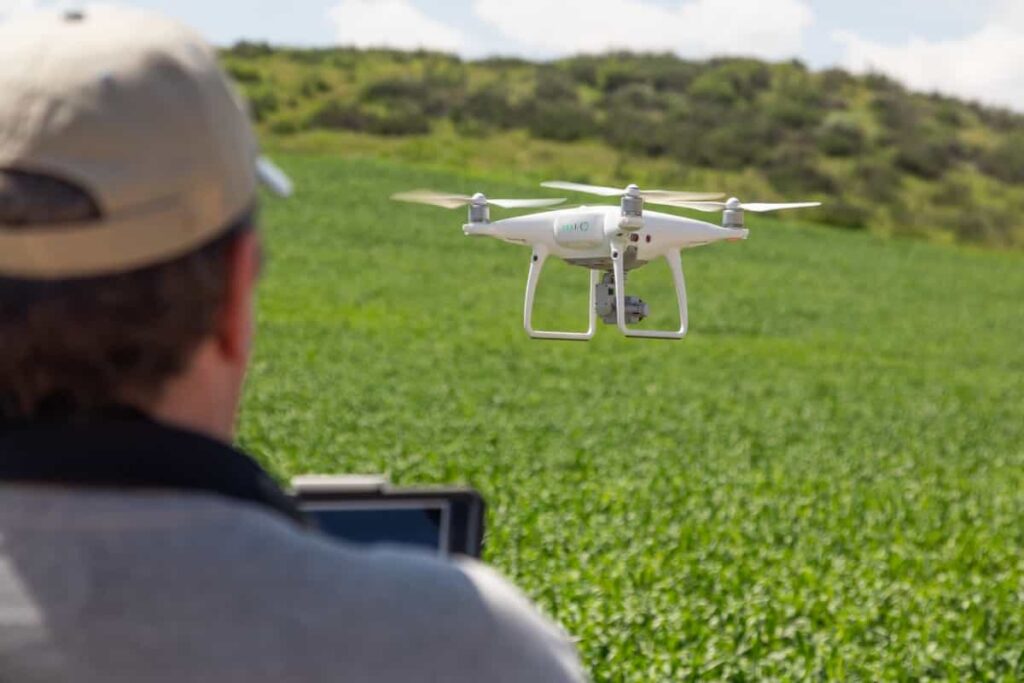Drone technology for weed management is revolutionizing agriculture by utilizing unmanned aerial vehicles to target and control invasive plant species. These drones are equipped with advanced imaging systems that can accurately identify weeds across vast fields with precision.

Overview of Drone Technology for Weed Management
The Rise of Drones in Agricultural Practices
The rise of drones in agriculture signifies a shift towards sustainable farming practices that prioritize environmental protection and resource efficiency. By utilizing advanced imaging technologies, drones can swiftly identify weed hotspots across vast farmlands, enabling farmers to take proactive measures before issues escalate. This proactive approach is key to maintaining healthy crops without compromising productivity or sustainability.
Summary of Drone Technology for Efficient Weed Control
Drone technology has revolutionized weed control in agriculture. Drones offer a bird’s-eye view of the fields, enabling farmers to identify and target weeds with precision. With drone surveillance, farmers can monitor weed growth patterns over time, allowing for timely intervention before the situation escalates. The use of drones in weed management not only increases efficiency but also promotes sustainable farming practices by minimizing chemical runoff.
Advancements in Drone Imaging for Weed Identification
High-Resolution Aerial Photography and Weed Mapping
Advancements in drone imaging for weed identification have revolutionized the way farmers approach weed management. High-resolution aerial photography allows drones to capture detailed images of fields, pinpointing areas infested with weeds. This precision enables farmers to create accurate weed maps, highlighting problem areas and guiding targeted treatment strategies. Weed mapping through drone technology provides valuable insights into the distribution and density of weeds across vast agricultural landscapes.
Spectral Analysis for Precise Weed Species Detection
This innovative approach allows farmers to target specific weeds more effectively, reducing the need for blanket herbicide applications and minimizing environmental impact. By utilizing spectral analysis for precise weed species detection, farmers can take a proactive stance toward sustainable farming practices. This technology empowers them to make data-driven decisions that result in healthier crops and higher yields.
Precision Herbicide Application with Drones
Targeted Spraying Techniques for Minimizing Herbicide Use
By using targeted spraying techniques, farmers can reduce their overall herbicide use while effectively managing weed infestations. These drones are capable of scanning the land below with precision sensors, identifying weeds, and selectively applying herbicides only where needed. This method not only saves time and money but also promotes sustainable farming practices by reducing chemical runoff into water sources.
Benefits of Drone-Assisted Precision Agriculture for Weed Control
Drone-assisted precision agriculture offers a plethora of benefits for weed control in farming practices. Farmers can accurately identify and target weeds in their fields. This approach minimizes the use of herbicides, reducing costs and environmental impact. The ability to survey large areas quickly allows farmers to detect weed infestations early on, preventing them from spreading further. Drones provide real-time data that can be integrated into farm management software, enabling farmers to make informed decisions promptly.
Integrating Drone Data with Farm Management Software
Enhancing Decision-Making with Real-Time Field Data
With real-time insights, you can make informed choices instantly. No more guessing or relying on outdated information – drones provide up-to-the-minute data for quick and efficient actions. By combining drone technology with farm software, farmers can optimize their operations like never before. From monitoring crop health to detecting weed infestations early on, the possibilities are endless. This integration streamlines processes and improves overall efficiency in managing agricultural tasks.
In case you missed it: Automation in Livestock Management with AI: Enhancing Sustainability with Technology

Streamlining Weed Management Strategies through Data Integration
In today’s agricultural landscape, streamlining weed management strategies through data integration is revolutionizing the way farmers combat unwanted plant growth. By harnessing the power of drone technology and farm management software, real-time field data can be analyzed to make informed decisions on effective weed control measures. Integrating drone data with precision agriculture techniques allows for targeted herbicide applications, minimizing chemical usage while maximizing efficiency in weed eradication.
Economic Benefits of Drone Technology in Agriculture
Cost-Effectiveness of Drone Use for Weed Management
The cost-effectiveness of drone technology lies in its ability to target weeds precisely, minimizing herbicide use and reducing overall operational expenses. By utilizing drones for weed management, farmers can save both time and money by efficiently identifying and treating problematic areas within their fields. This targeted approach not only decreases labor costs but also reduces the reliance on costly herbicides while enhancing crop yields.
ROI Analysis: Comparing Traditional vs. Drone-Assisted Methods
Traditional methods often involve manual labor and broad-spectrum herbicides, which can be costly and inefficient. On the other hand, drone-assisted methods offer precision and targeted solutions that can lead to significant cost savings. Drones equipped with advanced imaging knowledge can accurately identify weeds and apply herbicides only where needed, reducing waste and optimizing resources. Conducting an ROI analysis between traditional and drone-assisted weed management methods is essential for modern agricultural practices striving for efficiency and sustainability.
Environmental Impact and Sustainability
Reducing Chemical Runoff through Targeted Applications
By utilizing targeted applications, drones can precisely spray herbicides only where needed, minimizing the overall use of chemicals on farms. The ability of drones to accurately target specific areas infested with weeds helps in preventing excessive herbicide spread across fields. This focused application ensures that only the necessary areas receive treatment, leading to a more environmentally friendly farming practice.
Promoting Sustainable Farming Practices with Drone Technology
By utilizing drones for weed management, farmers can reduce the need for excessive herbicide use, leading to a more environmental approach to pest control. Drones allow for targeted spraying techniques that minimize chemical runoff and protect water sources from contamination. This precision application not only benefits the environment but also helps farmers save on costs associated with excess herbicide usage.
Operational Challenges and Solutions
Navigating Regulatory Frameworks for Drone Usage
Farmers and agricultural professionals must stay informed about evolving laws and guidelines surrounding drone technology. Understanding airspace restrictions, licensing requirements, and privacy concerns is crucial to ensure compliance with regulations. Challenges may arise when obtaining permits for commercial drone operations or navigating local regulations that vary from one region to another. To overcome operational challenges related to regulatory frameworks, farmers can benefit from participating in training programs specific to drone operations in agriculture.
Overcoming Technical Limitations and Enhancing Drone Capabilities
One key challenge is the limited flight time of drones, which can restrict the area they can cover in a single mission. To overcome this limitation, advancements are being made in battery technology and drone design to extend flight times and increase efficiency. Moreover, ongoing research focuses on developing specialized sensors and imaging technologies to improve weed detection and mapping accuracy from aerial perspectives.
Training and Education for Drone Operation
Developing Skills for Effective Drone Use in Agriculture
Farmers need to develop the skills required for effective drone operation to maximize benefits in weed management. Training programs focus on teaching farmers how to fly drones safely and efficiently, as well as how to interpret the data collected by these devices for better decision-making on the farm. Educational resources provide valuable insights into integrating drones into existing agricultural practices, helping farmers adapt to this innovative approach seamlessly.
In case you missed it: Integrating Technology in Poultry Farming Operations: For Healthy and Profitable Poultry Business

Educational Resources and Certification Programs for Farmers
Educational resources and certification programs are available to help you master the art of utilizing drones effectively on your farm. These programs provide valuable insights into drone technologies, regulations, and best practices. Certification programs also offer practical training sessions where farmers can practice flying drones and performing various tasks related to weed management. Drone mapping for weed identification brings a new level of precision to agricultural practices.
In case you missed it: The Role of Technology in Vertical Farming: Automation, AI, and IoT Solutions

Conclusion
The use of drones in weed management allows farmers to implement targeted spraying techniques, minimizing herbicide usage and reducing environmental impact. This smart farming solution integrates drone data with farm management software, providing real-time insights for more effective decision-making. Drone surveillance for weed control is revolutionizing the way farmers manage their crops.
- Profitable Village Farming Business Ideas in 2024
- High-Yield Aquaculture: Fast-Growing Fish for Farming
- Effective Fish Pond Construction Techniques for Beginners
- Irrigation and Water Management in Pineapple Farming
- Blossom to Harvest: Mastering Flowering and Pollination in Papaya Farming
- Pig Fattening Essentials: From Selection to Sale for Beginners
- Raising Wagyu Cattle: A Complete Guide for Premium Beef Production
- Soil Types and Their Water Holding Capacity
- Optimizing Irrigation Schedules for Coconut Groves for Enhanced Yield
